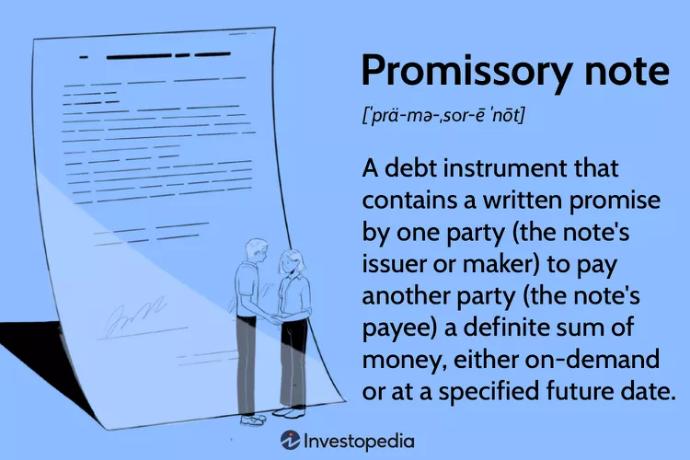Promissory Notes on Paper: Their Function, Endorsement Process, and Differences from Post-dated Checks
A promissory note is a legal document in which one party (the issuer) promises to pay a specific amount to another party (the holder) on a particular date or upon demand. Promissory notes can be used to secure a variety of transactions, such as loans, purchases, or investments.

Promissory Notes on Paper: Their Function, Endorsement Process, and Differences from Post-dated Checks
Introduction:
Promissory notes are another financial instrument that, similar to post-dated checks, can be used to facilitate transactions between parties. In this blog post, we will examine how promissory notes work on paper and discuss their endorsement and transfer process. We will also compare them to post-dated checks to highlight their key differences.
What is a Promissory Note?
A promissory note is a legal document in which one party (the issuer) promises to pay a specific amount to another party (the holder) on a particular date or upon demand. Promissory notes can be used to secure a variety of transactions, such as loans, purchases, or investments.
How Do Promissory Notes Work?
When a promissory note is issued, the issuer agrees to pay the holder the specified amount on the agreed-upon date or upon demand. Like post-dated checks, promissory notes are often used to establish trust between the debtor and the creditor and can help facilitate trade and commerce.
The Endorsement and Transfer Process:
In theory, promissory notes can be endorsed and transferred between multiple parties, allowing the holder to cash the note's value or use it for another good or service. However, the likelihood of a promissory note being successfully endorsed and transferred depends on the trustworthiness of the issuer.
Promissory notes issued by reputable business people are more likely to be endorsed and transferred among other business people. However, when promissory notes are issued by ordinary people, they are less likely to circulate widely, as the trust factor may not be as strong.
Differences from Post-dated Checks:
While both promissory notes and post-dated checks serve as financial instruments to establish trust between debtors and creditors, there are some key differences between the two:
Circulation: Post-dated checks generally circulate more easily than promissory notes, particularly when the issuer is an ordinary business person. Promissory notes, on the other hand, are less likely to be endorsed and transferred unless the issuer is a trustworthy business person.
Legal consequences: Bouncing post-dated checks can have legal consequences for both the issuer and the endorser. In contrast, promissory notes typically have less severe legal implications, as they are considered a less formal financial instrument.
Conclusion:
Promissory notes are a valuable financial instrument that can help facilitate transactions between parties. However, their endorsement and transfer process depends heavily on the trustworthiness of the issuer, making them less versatile than post-dated checks in certain situations. Understanding the differences between these two financial instruments can help individuals and businesses make informed decisions when selecting the appropriate tool for their needs.